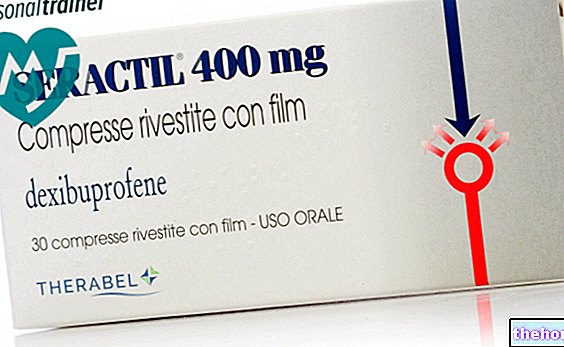Active ingredients: Ganirelix
Orgalutran 0.25 mg / 0.5 ml solution for injection
Why is Orgalutran used? What is it for?
Orgalutran belongs to a group of medicines called 'gonadotropin-releasing hormone antagonists' which counteract the actions of the' natural gonadotropin-releasing hormone (GnRH). GnRH regulates the release of gonadotropins (luteinizing hormone (LH) and follicle stimulating hormone (FSH)).
Gonadotropins play an important role in human fertility and reproduction. In women, FSH is needed for the growth and development of follicles in the ovaries. The follicles are small round sacs that contain egg cells. LH is needed to release mature egg cells from the follicles and ovaries ( that is, for ovulation.) Orgalutran inhibits the action of GnRH by suppressing the release of LH especially.
Orgalutran serves
In women undergoing assisted reproductive techniques, including in vitro fertilization (IVF) and other methods, occasionally ovulation may occur too early, causing a significant reduction in the chance of becoming pregnant. Orgalutran is used to prevent premature release of LH. which can cause premature release of egg cells.
In clinical trials Orgalutran was used with recombinant follicle stimulating hormone (FSH) or corifollitropin alfa, a stimulating follicle with a long duration of action.
Contraindications When Orgalutran should not be used
Do not use Orgalutran
- if you are allergic to ganirelix or any of the other ingredients of this medicine (listed in section 6),
- if you are hypersensitive (allergic) to the gonadotropin-releasing hormone GnRH or a GnRH analogue,
- if you have moderate or severe kidney or liver disease,
- if you are pregnant or breastfeeding.
Precautions for use What you need to know before taking Orgalutran
Talk to your doctor, pharmacist or nurse before using Orgalutran
- If you have an active allergic condition, please tell your doctor. Your doctor will decide, depending on the severity, if additional checks will be needed during treatment. Cases of allergic reactions have been reported, already with the first dose.
- The needle cover of this medicine contains natural rubber latex which may cause allergic reactions.
- During or following hormonal stimulation of the ovaries, ovarian hyperstimulation syndrome may occur. This syndrome is related to the gonadotropin stimulation procedure. Read the package leaflet of the gonadotropin medicine that has been prescribed for you.
- The incidence of congenital malformations after the application of assisted reproductive techniques may be slightly higher than that after spontaneous conception. This slightly higher incidence is thought to be related to the characteristics of patients undergoing fertility treatment (eg age of the woman, sperm characteristics) and to the higher incidence of multiple pregnancies after the application of assisted reproductive techniques. L "Incidence of congenital malformations after the application of assisted reproductive techniques using Orgalutran is no different from that observed with the use of other GnRH analogues in assisted reproductive techniques.
- There is a slightly increased risk of ectopic pregnancy in women with damaged fallopian tubes.
- The efficacy and safety of Orgalutran have not been established in women weighing less than 50 kg or more than 90 kg. Please ask your doctor for further information. Children and adolescents The use of Orgalutran in children is not appropriate.
Interactions Which drugs or foods can modify the effect of Orgalutran
Tell your doctor or pharmacist if you are taking, have recently taken or might take any other medicines.
Warnings It is important to know that:
Pregnancy, breastfeeding and fertility
Orgalutran should be used during controlled ovarian stimulation in assisted reproductive techniques (ART). Do not use Orgalutran during pregnancy and breastfeeding.
Ask your doctor or pharmacist for advice before taking this medicine.
Driving and using machines
No studies on the ability to drive and use machines have been performed.
Orgalutran contains less than 1 mmol sodium (23 mg) per injection and is therefore essentially "sodium free".
Dose, Method and Time of Administration How to use Orgalutran: Posology
Always use this medicine exactly as your doctor or pharmacist has told you. If in doubt, consult your doctor or pharmacist.
Orgalutran is used as part of treatment for assisted reproductive techniques (ART), including in vitro fertilization (IVF). Ovarian stimulation with follicle-stimulating hormone (FSH) or corifollitropin may begin on day 2 or 3 of the cycle. Orgalutran injection (0.25 mg) should be given just under the skin (subcutaneous), once daily, starting on day 5 or 6 of stimulation. Based on the ovarian response, the doctor may decide to start on another day.
Orgalutran and FSH should be administered at approximately the same time. However, the preparations should not be mixed and the injections should be given at different sites.
Daily treatment with Orgalutran should continue until there is a sufficient number of follicles of adequate size. The final maturation of the egg cells in the follicles can be induced by administration of human chorionic gonadotropin (hCG). The time interval between two injections of Orgalutran and between the last injection of Orgalutran and that of hCG should not exceed 30 hours, otherwise premature ovulation (ie the release of egg cells) may occur. Therefore, when Orgalutran is administered in the morning, Orgalutran treatment should be continued throughout the gonadotropin treatment period, including the day of ovulation induction. When Orgalutran is administered in the afternoon, the last Orgalutran injection should be administered the afternoon before the day of induction.
Instructions for Use
Injection site
Orgalutran is supplied in pre-filled syringes and should be injected slowly just under the skin, preferably in the thigh. Check the solution before use. Do not use if the solution contains particles or is not clear. If you are going to inject yourself or if your partner does it, follow the instructions below carefully. Do not mix Orgalutran with any other medicine.
Preparation of the injection site
Wash your hands thoroughly with soap and water. Dab the injection site with a disinfectant (e.g. alcohol) to remove bacteria from the surface. Clean approximately 5 centimeters (two inches) around the point where the needle will penetrate and allow the area to dry for at least one minute before continuing.
Introduction of the needle
Remove the cap from the needle. Pinch a large area of skin between thumb and forefinger. The needle must be introduced at the base of the area of skin pinched between the two fingers, with an inclination of 45 ° with respect to the surface of the skin itself. At each administration the injection site will have to be changed.
Checking the correct position of the needle
Gently pull back the plunger to check if the needle is in the correct position. Any blood in the syringe indicates that the needle has entered a blood vessel. If this happens, do not inject Orgalutran but remove the needle, cover the injection site with a swab wet with disinfectant and apply pressure; the blood will stop in a minute or two. Do not use the syringe but throw it away properly Start again with a new syringe.
Injection of the solution
Once the needle has been positioned correctly, push the plunger slowly and steadily, so that the solution is correctly injected and the skin tissue is not damaged.
Removing the syringe
Quickly withdraw the needle and apply some pressure to the injection site, using a swab wetted with disinfectant. Use the pre-filled syringe only once. Of ovulation.
Overdose What to do if you have taken too much Orgalutran
If you use more Orgalutran than you should
Contact your doctor.
If you forget to use Orgalutran
If you think you have missed a dose, give the injection as soon as possible.
Do not use a double dose to make up for a forgotten dose.
If more than 6 hours have passed since the usual injection time (so that the time interval between the two injections is more than 30 hours), give the injection as soon as possible and consult your doctor for further advice.
If you stop taking Orgalutran
Do not stop taking Orgalutran unless advised by your doctor, as this may affect the result of the treatment.
If you have any further questions on the use of Orgalutran, ask your doctor, pharmacist or nurse.
Side Effects What are the side effects of Orgalutran
Like all medicines, this medicine can cause side effects, although not everybody gets them.
Common side effects (affects 1 to 10 users in 100) are local skin reactions at the injection site (mainly redness, with or without swelling). The local reaction usually disappears within 4 hours of administration.Very rarely, more widespread reactions of probable allergic nature have been observed in less than 1 user in 10,000, already with the first dose.
Uncommon side effects (affecting 1 to 10 users in 1,000) are headache, nausea and malaise.
In addition, undesirable effects have been reported that are attributable to treatment for controlled ovarian hyperstimulation (eg abdominal pain, ovarian hyperstimulation syndrome (OHSS), ectopic pregnancy (when the embryo develops outside the uterus) and abortion ( see the leaflet of the FSH-based preparation with which it is treated).
In one case, worsening of a pre-existing rash (eczema) was reported after the first dose of Orgalutran.
If you get any side effects, talk to your doctor, pharmacist or nurse. This includes any possible side effects not listed in this leaflet.
Expiry and Retention
Keep this medicine out of the sight and reach of children.
Do not use this medicine after the expiry date which is stated on the carton and on the label after "EXP". The expiry date refers to the last day of the month.
Do not freeze.
Store in the original package to protect the medicine from light.
Check the syringe before use. Use only syringes containing clear, particle-free, unopened solutions.
Do not throw any medicines via wastewater or household waste. Ask your pharmacist how to throw away medicines you no longer use. This will help protect the environment.
Composition and pharmaceutical form
What Orgalutran contains
- The active substance is ganirelix (0.25 mg in 0.5 ml of solution).
- The other ingredients are acetic acid, mannitol, water for injections. The pH (the measure of acidity) can be adjusted with sodium hydroxide and acetic acid.
What Orgalutran looks like and contents of the pack
Orgalutran is a clear and colorless aqueous solution for injection. The solution is ready for use and intended for subcutaneous administration. The needle cover contains natural rubber latex.
Orgalutran is available in packs of 1 or 5 pre-filled syringes.
Not all pack sizes may be marketed.
Source Package Leaflet: AIFA (Italian Medicines Agency). Content published in January 2016. The information present may not be up-to-date.
To have access to the most up-to-date version, it is advisable to access the AIFA (Italian Medicines Agency) website. Disclaimer and useful information.
01.0 NAME OF THE MEDICINAL PRODUCT
ORGALUTRAN 0.25 MG / 0.5 ML SOLUTION FOR INJECTION
02.0 QUALITATIVE AND QUANTITATIVE COMPOSITION
Each pre-filled syringe contains 0.25 mg of ganirelix in 0.5 ml of aqueous solution. The active ingredient ganirelix (INN) is a synthetic decapeptide with high antagonist activity against the natural gonadotropin releasing hormone (GnRH). The amino acids in positions 1, 2, 3, 6, 8 and 10 of the natural decapeptide GnRH have been replaced in order to obtain [N-Ac-D-Nal1, D-pClPhe2, D-Pal3, D-hArg (Et2) 6, L-hArg (Et2) 8, D-Ala10] -GnRH, having a molecular weight of 1,570, 4.
For the full list of excipients, see section 6.1.
03.0 PHARMACEUTICAL FORM
Injectable solution.
Clear and colorless aqueous solution.
04.0 CLINICAL INFORMATION
04.1 Therapeutic indications
Prevention of early luteinizing hormone (LH) spike in women undergoing controlled ovarian hyperstimulation (COH) in assisted reproductive techniques (ART).
In clinical studies Orgalutran was used with recombinant human follicle stimulating hormone (FSH) or corifollitropin alfa, with sustained follicle stimulating action.
04.2 Posology and method of administration
Orgalutran should only be prescribed by a specialist experienced in the treatment of infertility.
Dosage
Orgalutran is used to prevent early LH surge in women undergoing COH. Controlled ovarian hyperstimulation with FSH or corifollitropin alfa may begin on day 2 or 3 of the cycle. Orgalutran (0.25 mg) should be administered by subcutaneous injection once daily starting on day 5 or 6 of FSH administration or daily 5 or 6 following the administration of corifollitropin alfa. The day to start Orgalutran is a function of the ovarian response, ie a function of the number and size of the growing follicles and / or the amount of circulating estradiol. In the absence of follicular growth, initiation of Orgalutran treatment may be postponed, although clinical experience is based on initiation of Orgalutran treatment on day 5 or 6 of stimulation.
Orgalutran and FSH should be administered at approximately the same time. However, the two preparations should not be mixed and injections should be given at different sites. FSH dose adjustment should be based on the number and size of the growing follicles, rather and on the amount of estradiol in circulation (see section 5.1).
Daily treatment with Orgalutran should be continued until the day when a sufficient number of follicles of adequate size are evident. The final maturation of the follicles can be induced by the administration of human chorionic gonadotropin (hCG).
Timing of the last injection
Given the half-life of ganirelix, the interval between two injections of Orgalutran and between the last injection of Orgalutran and that of hCG should not exceed 30 hours, otherwise an early LH surge may occur. Therefore, when Orgalutran is administered to the In the morning, Orgalutran treatment should be continued throughout the gonadotropin treatment period, including the day of ovulation induction. When Orgalutran is administered in the afternoon, the last Orgalutran injection should be administered the afternoon before the day of the induction of ovulation.
Orgalutran has been shown to be safe and effective in women undergoing multiple treatment courses.
The need for luteal phase support during Orgalutran treatment cycles has not been studied. In clinical trials, luteal phase support was performed according to study center medical practice or according to clinical protocol.
Pediatric population
There is no indication for the specific use of Orgalutran in the pediatric population.
Renal and hepatic insufficiency
There is no experience on the use of Orgalutran in subjects with renal or hepatic impairment, as they were excluded from clinical studies. Therefore, the use of Orgalutran is contraindicated in patients with moderate or severe renal or hepatic impairment (see section 4.3).
Method of administration
Orgalutran should be administered subcutaneously, preferably in the thigh. The injection site must be varied to prevent lipoatrophy. Orgalutran subcutaneous injections can be given by the patient herself or by another person as long as they are properly trained and with the possibility of obtaining advice from an expert.
04.3 Contraindications
• Hypersensitivity to the active substance or to any of the excipients listed in section 6.1.
• Hypersensitivity to gonadotropin releasing hormone (GnRH) or any other GnRH analogue.
• Moderate or severe impairment of renal or hepatic function.
• Pregnancy or breastfeeding.
04.4 Special warnings and appropriate precautions for use
• Particular attention should be paid to women with signs and symptoms of existing allergic conditions. Cases of hypersensitivity reactions have been reported, as early as with the first dose, during post-marketing surveillance (see section 4.8). In the absence of clinical experience, treatment with Orgalutran is not recommended in women with severe allergic conditions.
• The packaging of this medicinal product contains natural rubber latex which may cause allergic reactions (see section 6.5).
• Ovarian hyperstimulation syndrome (OHSS) may occur during or after ovarian stimulation. OHSS should be considered an inherent risk of gonadotropin stimulation. Treatment of OHSS should be symptomatic, eg rest, intravenous infusion of electrolyte or colloidal solutions, and heparin.
• Since infertile women undergo assisted fertilization, especially fertilization in vitro (IVF), often have tubal abnormalities, the incidence of ectopic pregnancies may be higher. It is therefore important to confirm early, by ultrasound, that it is an intrauterine pregnancy.
• The incidence of congenital malformations after the application of assisted reproductive techniques (ART) may be higher than that after spontaneous conception. This is thought to be due to differences in parental characteristics (e.g. mother's age, sperm characteristics) and an increased incidence of multiple pregnancies. Over 1,000 newborns have been evaluated in clinical trials and it has been shown that the incidence of congenital malformations in children born after treatment for controlled ovarian hyperstimulation using Orgalutran is comparable to that reported with the use of a GnRH agonist.
• The safety and efficacy of Orgalutran have not been established in women weighing less than 50 kg or more than 90 kg (see also sections 5.1 and 5.2).
• This medicine contains less than 1 mmol sodium (23 mg) per injection and is therefore essentially 'sodium-free'.
04.5 Interactions with other medicinal products and other forms of interaction
No interaction studies have been performed.
The possibility of interactions with commonly used medicinal products, including histamine-releasing medicinal products, cannot be excluded.
04.6 Pregnancy and lactation
Fertility
Ganirelix is used to treat women undergoing controlled ovarian hyperstimulation in assisted reproductive programs. Ganirelix is used to prevent early LH surges that may otherwise occur in these women during ovarian stimulation.
For the posology and method of administration, see section 4.2.
Pregnancy
There are no adequate data from the use of ganirelix in pregnant women.
In animals, exposure to ganirelix at the time of implantation resulted in resorption of the fetuses (see section 5.3). The relevance of these data to the human species is unknown.
Feeding time
It is not known whether ganirelix is excreted in human milk.
The use of Orgalutran is contraindicated during pregnancy and lactation (see section 4.3).
04.7 Effects on ability to drive and use machines
No studies on the ability to drive and use machines have been performed.
04.8 Undesirable effects
The list below shows all adverse reactions in women treated with Orgalutran in clinical trials using recombinant FSH (recFSH) for ovarian stimulation. Similar adverse reactions are expected with Orgalutran using corifollitropin alfa for ovarian stimulation. Adverse reactions are classified. according to MedDRA system organ class; very common (≥1 / 10), common (≥1 / 100,
Disorders of the immune system
Very rare: Cases of hypersensitivity reactions (including various symptoms such as rash, swelling of the face and dyspnoea) have been reported among patients treated with Orgalutran as early as with the first dose.
Worsening of pre-existing eczema was reported in one subject after the first dose of Orgalutran.
Nervous system disorders
Uncommon: headache.
Gastrointestinal disorders
Uncommon: nausea.
General disorders and administration site conditions
Very common: Orgalutran may cause a local skin reaction at the injection site (mainly redness, with or without edema). In clinical trials, one hour after injection, the incidence of moderate or severe local skin reaction, at least once per treatment cycle, as reported by patients, was 12% in Orgalutran-treated patients and 25%. in those treated with a GnRH agonist subcutaneously Local reactions usually disappear within 4 hours after administration.
Uncommon: malaise.
Other reported adverse reactions such as, in particular pelvic pain, abdominal distention, OHSS (see also section 4.4.), Ectopic pregnancy and spontaneous abortion are related to the controlled ovarian hyperstimulation treatment for ART.
04.9 Overdose
Overdose in humans can lead to prolongation of the duration of action.
There are no acute toxicity data of Orgalutran in humans. Clinical studies with subcutaneous administration of Orgalutran in single doses up to 12 mg have shown no systemic adverse reactions. Non-specific toxicity symptoms such as hypotension and bradycardia were observed in acute toxicity studies in rats and monkeys only after intravenous administration of ganirelix, at doses above 1 and 3 mg / kg, respectively.
In the event of an overdose, Orgalutran treatment should be (temporarily) stopped.
05.0 PHARMACOLOGICAL PROPERTIES
05.1 Pharmacodynamic properties
Pharmacotherapeutic group: pituitary and hypothalamic hormones and analogues, gonadotropin releasing hormone antagonist.
ATC code: H01CC01.
Orgalutran is a GnRH antagonist, which modulates the hypothalamic-pituitary-gonadal axis, by competitive binding with the GnRH receptors in the pituitary gland. As a result, there is a rapid, intense reversible suppression of the release of endogenous gonadotropins, without the initial stimulation observed with GnRH agonists. After administration of multiple doses of 0.25 mg Orgalutran to female volunteers, serum levels of LH, FSH and E2 decreased by up to 74%, 32%, and 25% at 4, 16 and 16 hours, respectively. administration. Serum hormone levels returned to pre-treatment values within two days after the last injection.
In patients undergoing controlled ovarian stimulation, the mean duration of Orgalutran treatment was 5 days. During Orgalutran treatment, the mean incidence of LH elevations (> 10 IU / l) with concomitant progesterone elevation (> 1 ng / mL) was 0.3 - 1.2% compared to 0.8% During GnRH agonist treatment. In women with higher body weight (> 80 kg), there was a tendency for an increased incidence of LH and progesterone elevation, but no effect on clinical outcome was observed. However, based on the small number of patients treated so far, some effect cannot be ruled out.
In the event of a high ovarian response, either as a result of "elevated gonadotropin exposure in the early follicular phase or as a result of a" elevated ovarian response, "premature elevation of LH may occur before day 6 of stimulation. treatment with Orgalutran on day 5 can prevent these premature LH elevations without compromising clinical outcomes.
In controlled studies conducted with Orgalutran with FSH, using a long treatment protocol with a GnRH agonist as a reference, treatment with Orgalutran resulted in faster follicular growth during the first days of stimulation, but the final cohort of maturing follicles is was slightly reduced and produced on average less estradiol. This different follicular growth behavior requires FSH dosage adjustments to be based on the number and size of maturing follicles, rather than the amount of circulating estradiol. Similar comparative studies with follitropin alfa using either a GnRH antagonist or a long agonist protocol have not been performed.
05.2 "Pharmacokinetic properties
After a single subcutaneous administration of 0.25 mg, the serum levels of ganirelix increase rapidly and reach a peak (Cmax) of approximately 15 ng / ml within 1-2 hours (tmax). The elimination half-life (t½) is approximately 13 hours and clearance approximately 2.4 l / h. Excretion occurs via faeces (approximately 75%) and urine (approximately 22%). The bioavailability of Orgalutran after subcutaneous administration is approximately 91%.
After multiple subcutaneous doses of Orgalutran (one "injection per day) the pharmacokinetic parameters are similar to those measured following a single subcutaneous dose. After repeated doses of 0.25 mg / day, steady-state levels of approximately 0.6 ng / day ml are reached in 2-3 days.
Pharmacokinetic analysis indicates an inversely proportional relationship between body weight and serum concentrations of Orgalutran.
Metabolite profile
The most important compound circulating in plasma is ganirelix. Ganirelix is also the main compound found in the urine, while only metabolites are present in the stool. The metabolites are small peptide fragments formed, by enzymatic hydrolysis, from ganirelix, in limited sites. The metabolite profile of Orgalutran in humans is similar to that found in animals.
05.3 Preclinical safety data
Non-clinical data reveal no special hazard for humans based on conventional studies of safety pharmacology, repeated dose toxicity and genotoxicity.
Reproduction studies conducted with ganirelix at doses ranging from 0.1 to 10 micrograms / kg / day subcutaneously in rats and between 0.1 and 50 micrograms / kg / day subcutaneously in rabbits showed increased resorption of fetuses in groups treated with the highest dose. No teratogenic effects were observed.
06.0 PHARMACEUTICAL INFORMATION
06.1 Excipients
Acetic acid;
Mannitol;
Water for injections.
The pH can be adjusted with sodium hydroxide and acetic acid.
06.2 Incompatibility
In the absence of compatibility studies, this medicinal product must not be mixed with other products.
06.3 Period of validity
3 years.
06.4 Special precautions for storage
Do not freeze.
Store in the original package to protect the medicine from light.
06.5 Nature of the immediate packaging and contents of the package
Disposable pre-filled syringes (siliconised type I glass), containing 0.5 ml of sterile aqueous solution, ready for use, closed with a rubber plunger that does not contain latex. Each pre-filled syringe is equipped with a closed needle with a latex cap natural rubber (see section 4.4).
Available in cartons of 1 or 5 pre-filled syringes.
Not all pack sizes may be marketed.
06.6 Instructions for use and handling
Check the syringe before use. Use only syringes containing clear, particle-free, unopened solutions.
Unused medicine and waste derived from this medicine must be disposed of in accordance with local regulations.
07.0 MARKETING AUTHORIZATION HOLDER
Merck Sharp & Dohme Limited
Hertford Road, Hoddesdon
Hertfordshire EN11 9BU
UK
08.0 MARKETING AUTHORIZATION NUMBER
EU / 1/00/130/001, 1 pre-filled syringe
034851016
EU / 1/00/130/002, 5 pre-filled syringes
034851028
09.0 DATE OF FIRST AUTHORIZATION OR RENEWAL OF THE AUTHORIZATION
Date of first authorization: May 17, 2000
Date of last renewal: May 17, 2010
10.0 DATE OF REVISION OF THE TEXT
19 September 2013




























